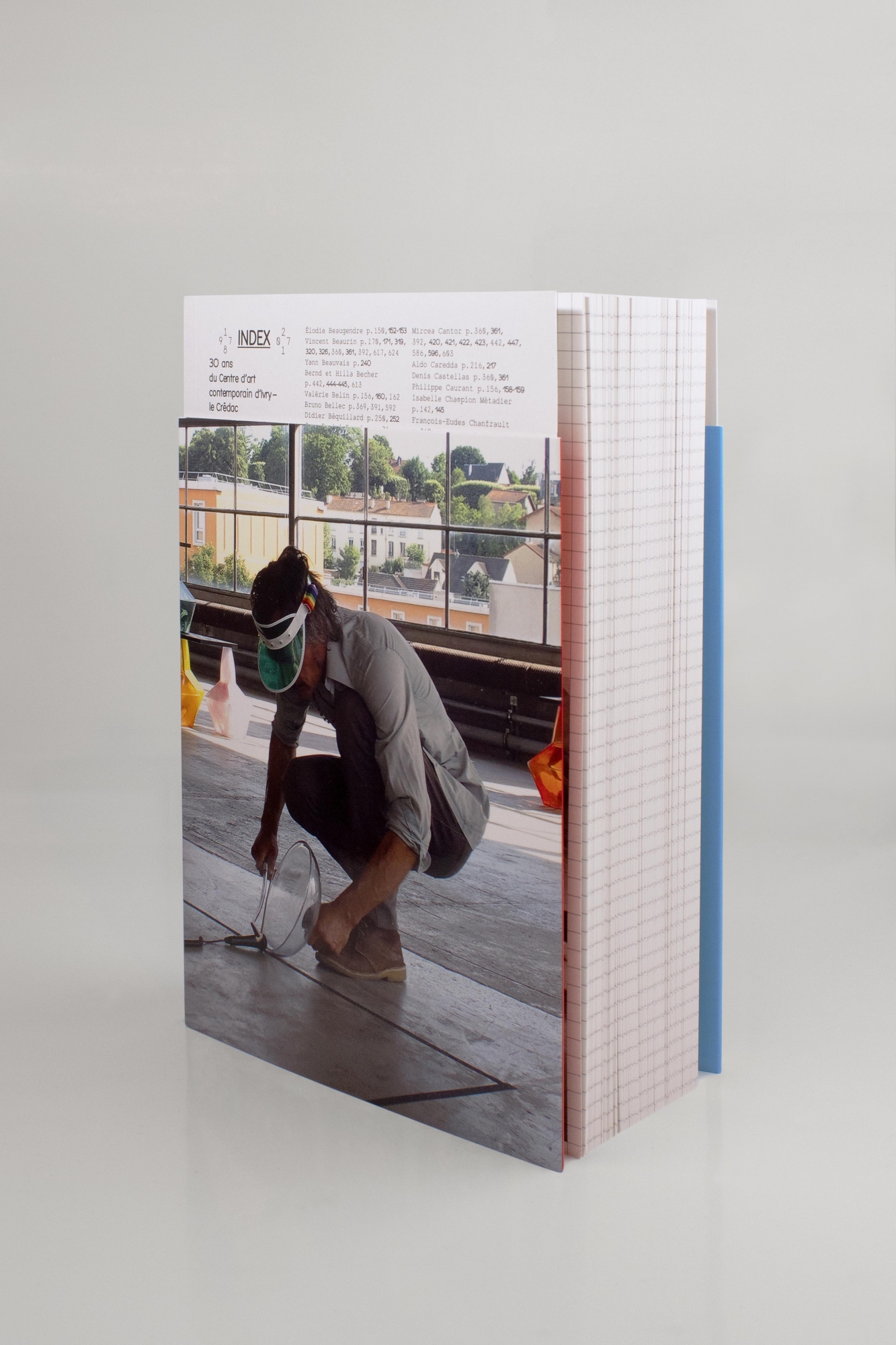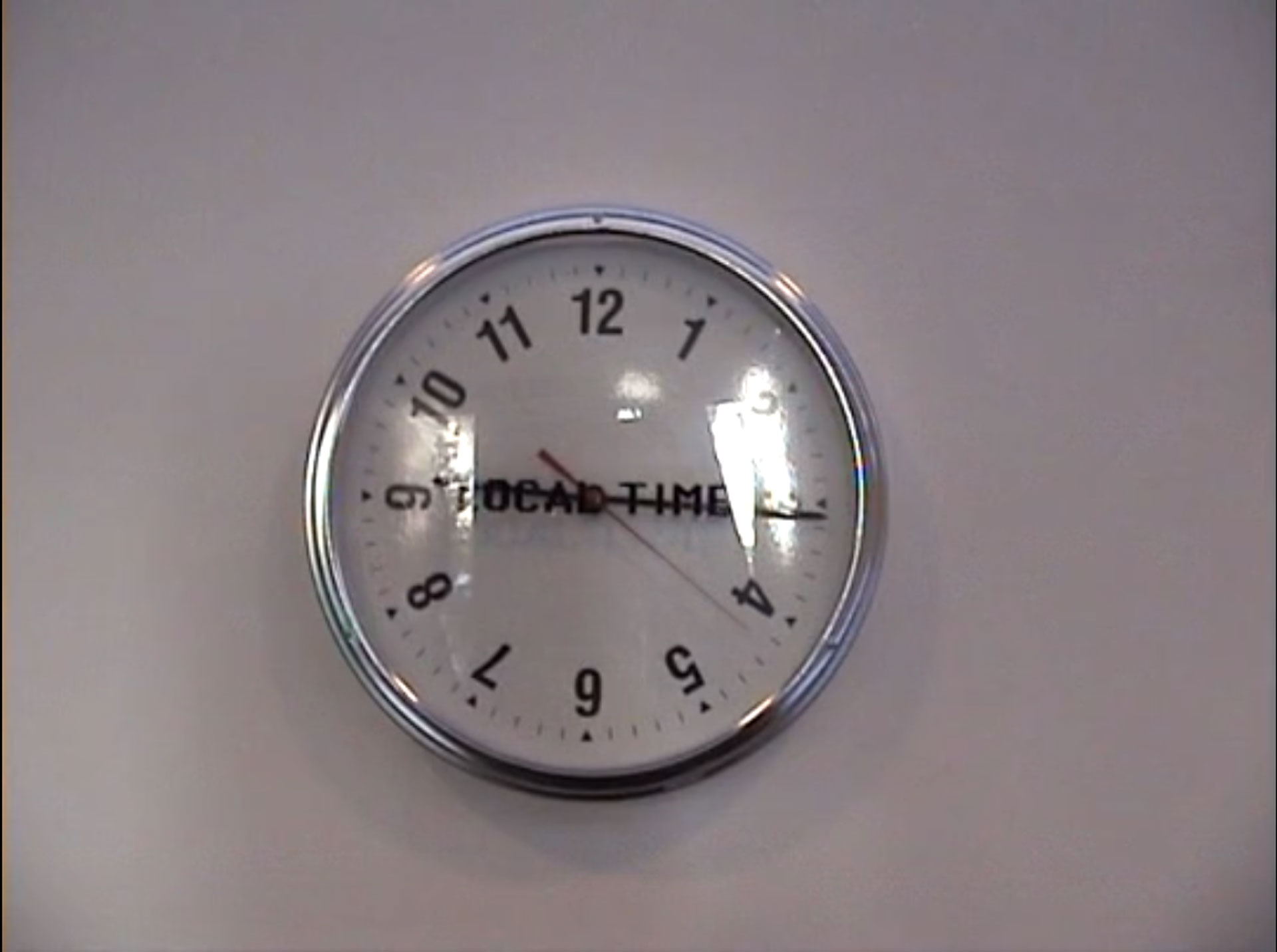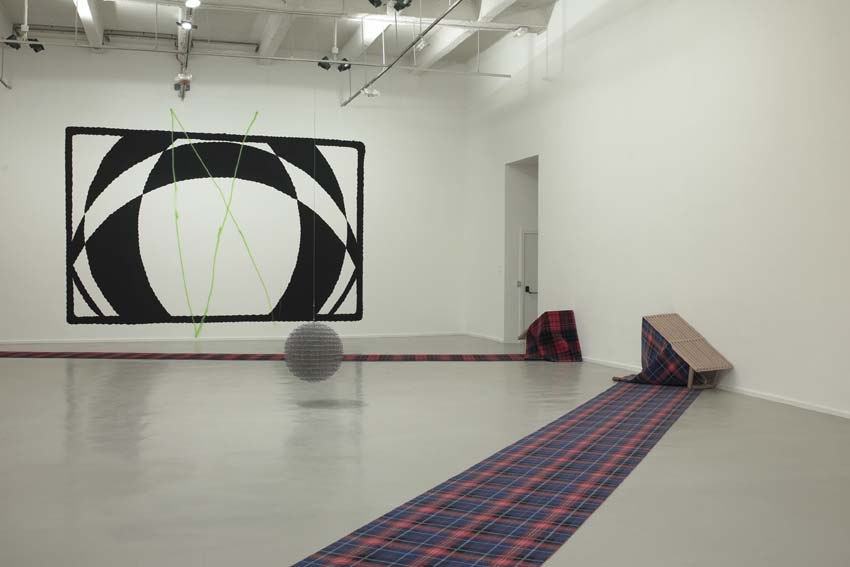Geometric Final Fantasy
Karina Bisch

View of Karina Bisch’s exhibition Geometric Final Fantasy, Centre d’art contemporain d’Ivry – le Crédac, 2005 Nunchakube, 2005, Wood, metal 130 × 130 × 130 cm / Medulor, 2005, Spray paint, 200 × 50 cm / New York, 2005, Acrylic on canvas, 90 × 110 cm. Courtesy art contemporain, Nosbaum Reding, Luxembourg © Photo : André Morin / le Crédac

View of Karina Bisch’s exhibition Geometric Final Fantasy, Centre d’art contemporain d’Ivry – le Crédac, 2005 Londres, 2005, Acrylic on canvas, 140 × 90 cm / Nunchakube, 2005, Wood, metal, 130 × 130 × 130 cm Courtesy art contemporain, Nosbaum Reding, Luxembourg © Photo : André Morin / le Crédac

View of Karina Bisch’s exhibition Geometric Final Fantasy, Centre d’art contemporain d’Ivry – le Crédac, 2005 Nunchakube, 2005, Wood, metal, 130 × 130 × 130 cm / Yser Bruxelles, 2005, Acrylic on canvas, 130 × 130 cm Courtesy art contemporain, Nosbaum Reding, Luxembourg © Photo : André Morin / Le Crédac

View of Karina Bisch’s exhibition Geometric Final Fantasy, Centre d’art contemporain d’Ivry – le Crédac, 2005 Untitled (teapot), 2005, Plaster, wood, 80 × 130 × 60 cm / Les géants, 2005, Burlap, felt, glue, paint, 4 × 280 × 120 cm / Hotel Ibis Amsterdam, 2005, Acrylic on canvas, 100 × 120 cm Courtesy art contemporain, Nosbaum Reding, Luxembourg © Photo : André Morin / Le Crédac

View of Karina Bisch’s exhibition Geometric Final Fantasy, Centre d’art contemporain d’Ivry – le Crédac, 2005 Untitled (teapot), 2005, Plaster, wood, 80 × 130 × 60 cm Courtesy art contemporain, Nosbaum Reding, Luxembourg © Photo : André Morin / Le Crédac

View of Karina Bisch’s exhibition Geometric Final Fantasy, Centre d’art contemporain d’Ivry – le Crédac, 2005 Les géants, 2005, Burlap, felt, glue, paint, 4 × 280 × 120 cm / Glasgow, 2005, Acrylic on canvas, 160 × 120 cm Courtesy art contemporain, Nosbaum Reding, Luxembourg © Photo : André Morin / Le Crédac






Passionate about the forms of modernism, Karina Bisch’s work is also nourished by things “outside art”: design, fashion, cinema, pop music, architecture, town planning, video games, hiphop. She loves Malevitch, Absalon, Neil Young, Fautrier. Her religion: modernist utopias, historical documents, Google.
The starting point for each section of her work is the notion of standard. Geometrical forms derived from architecture or painting are standardised forms. Her sculptures are produced from common forms like the cube, the parallelepiped and basic materials such as brick, plaster, wood, metal. She says she constructs with hackneyed, commonplace forms. Like the exhibition title, which is taken from a video game where the player makes up and develops his or her domestic and social world, Karina Bisch offers us a journey right to the heart of her various activities, paintings and sculptures. The four Géants in felt pen and acrylic on Hessian, presented here as a “screen”, may be interpreted in many different ways: “references to Matisse (his paper cutouts), Picasso, the practice of Cubist collage, decoration (tapestry), fashion (clothes), Futurism (these clothes are created after drawings by Giacomo Balla), a body beyond all human proportions, the circus, monumentality, the physicality of materials”.
Karina Bisch questions the notion of the original and the model and the place occupied by “the” model today. For this exhibition, she tackles a teapot created by Kasimir Malevich around 1920, offering us a “monumental” interpretation of it. The forms of the initial object are respected according to existing photographic documents, but the artist herself interprets the areas that are invisible on the images. On the subject of Nunchakube, a sculpture made of wood, metal and chains, Karina Bisch says “it is the vision of Gordon Liu handling the nunchaku (an arm of Japanese origin used in martial arts, made up of two or three sticks linked together by a chain) in 36th Chamber of Shaolin by Liu Chia-Liang combined with The Stick Man by Oskar Schlemmer that led to the construction of this work”. Suspended in space, “this wooden cube, its metal tops joined by chains, is a real cubic scourge, which, says the artist, favours “man’s death struggle with geometry”.
Geometry that can be found in her paintings also and that enables us to grasp Karina Bisch’s relationship with modernist architecture. Springing from the observation of geometry present in the reality of urban landscapes, the paintings take up geometrical motifs, fronts of buildings, interiors that the artist encounters on her strolls.
Claire Le Restif
Video(s)
Film of the solo shows by Karina Bisch and Vincent Lamouroux © Claire Le Restif / Le Crédac
Artist biography
-
Born in 1974 in Paris, France; she lives and works in Paris, France. http://karina.bisch.free.fr/



